A sample of hairs from your horse’s mane or tail reveals a lot. Genetic testing can confirm or disprove parentage — and it can identify desirable traits or potential disease-causing genotypes when breeding.
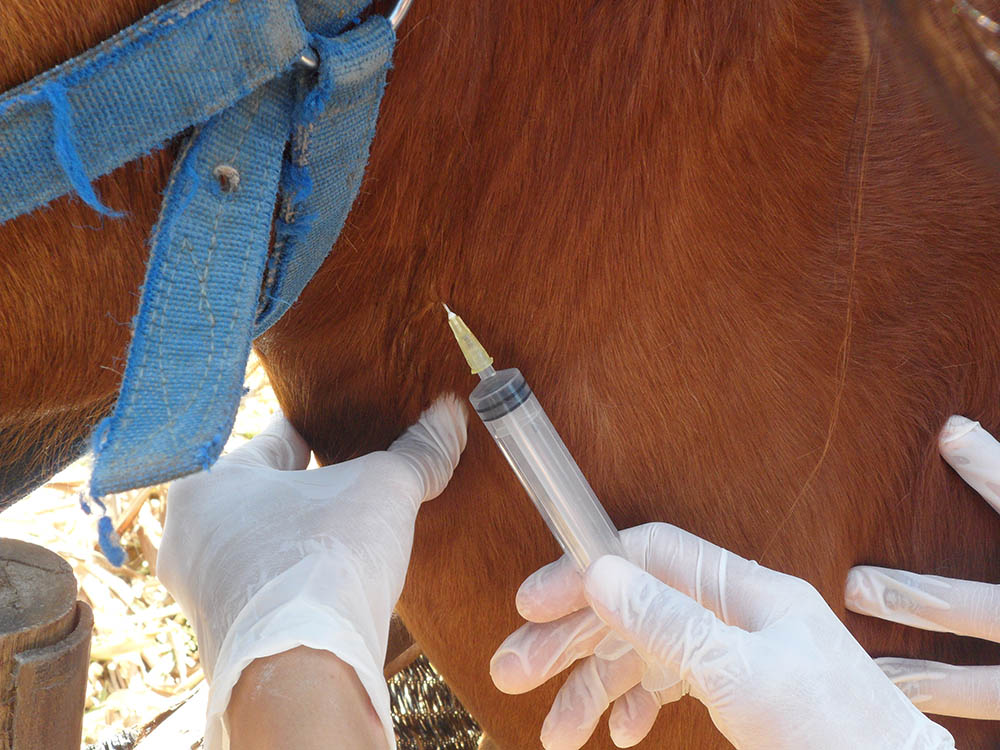
“Tail or mane hair is the
preferred type of hair.”
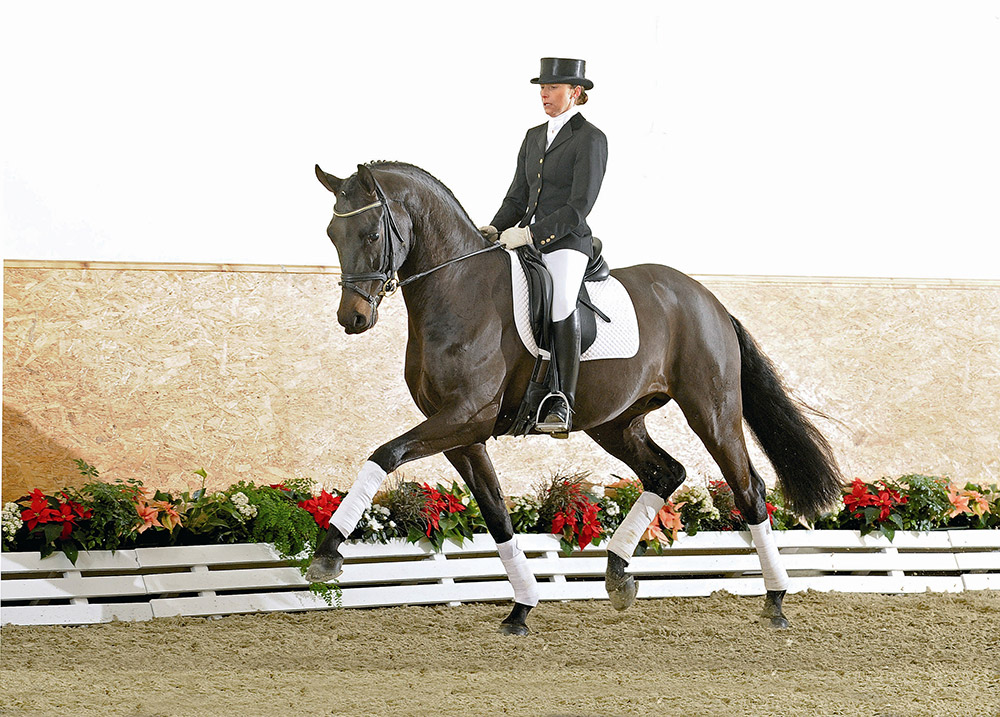
Last month we looked at hair testing for heavy metal content (‘Heavy Metal Toxicities’ Equestrian Life March, 2021); this month we look at genetic testing in horses. Genetic testing is commonly done using hair samples. It can also be done using blood, but this has disadvantages associated with storage, transportation, life expectancy and ease of accessibility. Hair is much easier to collect and store compared to blood, and it can readily be transferred and stored for years.
Genetic testing requires the follicle that contains the DNA to be attached to the hair sample. It is important that a reputable, properly accredited laboratory examines the sample and that the reader interprets the results based on the scientific evidence available. Tail or mane hair is the preferred type of hair for submission to the lab and is generally easy for most people to collect.
There are several reasons to have genetic testing done on your horse, the most common being as a unique form of identification that cannot be changed. Hand in hand with this is confirming the sire and dam of the horse. A foal gets half of its DNA from each of its parents, thus, by identifying an individual by its DNA, it also verifies that the foal is out of the stated mare and by the stated stallion.
This has become the standard for registration of many horse breed associations and societies, including Thoroughbreds, Standardbreds and Quarter Horses. Thoroughbreds and Standardbreds cannot race unless their DNA is tested and the correct parentage verified. Using DNA samples to verify parentage is extremely important in breeds that can utilise artificial insemination and/or embryo transfer, as simply sighting the foal on the mare, or reading the label on the semen straw, is no guarantee of the parents. The DNA of the foal produced will be a combination of the egg and the sperm DNA and cannot be influenced by the surrogate mare that carries the foal in an embryo transfer scenario.
Another key reason for genetic testing is to identify genotypes that are responsible for certain inherited traits or diseases. By identifying those horses that carry the gene for certain illnesses or traits, we can reduce the incidence of foals born with these conditions.
Many of the genetic disorders that can be effectively tested fall into the category of autosomal recessive traits, but some (less frequently) are autosomal dominant traits. An autosomal recessive trait means, in simple terms, that a foal needs to have a “bad” gene from both the mare and the stallion to show this trait. A foal that has one good gene and one bad gene will generally not show the disease, and a foal that has two good genes cannot pass on the disease. Horses that carry one good gene and one bad gene are referred to as carriers and often appear as normal healthy individuals but can go on to produce foals that show the trait in question. By identifying these individuals (carriers), matings between two carriers can be avoided, thus reducing the risk of a diseased foal being produced.
Warmblood Fragile Foal Syndrome (WFFS) is an example of an autosomal recessive trait that can be produced when two apparently normal horses that carry the WFFS gene are mated. Genetic testing provides the opportunity to prevent a horse that carries a “bad” gene from breeding at all, thus greatly reducing the incidence of disease in future generations.
Contrary to autosomal recessive, the autosomal dominant traits only require one “bad” gene to show clinical signs. A horse born with two bad genes may show more severe signs than those having just one bad gene, and one with no bad genes obviously shows no symptoms. The other major difference with autosomal dominant traits is that they are maintained in the population, and the clinical syndrome is not diluted out by mating a horse with the condition to a horse that shows no evidence of the trait.
UNDERSTANDING THE NUMBERS
A mating between two carriers of an autosomal recessive trait (we can use the example of WFFS, which is an autosomal recessive trait)
Dd x Dd
- 25% will be DD — Normal foals, which cannot pass WFFS on.
- 25% will be Dd and 25% will be dD — 50% will effectively act as carriers of WFFS.
- 25% will be dd — These foals will not survive and die before they can breed.
A mating between a carrier and a normal horse (not a carrier)
DD x Dd
- 50% DD — Normal foals, which cannot pass WFFS on.
- 50% Dd — Normal foals that can pass the WFFS gene on.
If we continue to mate Dd horses with DD horses, we effectively reduce the incidence of WFFS. There will still be carriers but not the clinical disease.
A mating between two carriers of an autosomal dominant trait (we can use the example of Polysaccharide storage myopathy, or PSSM1)
Pp x Pp
- 25% will be PP — Affected horses will show more severe symptoms of PSSM1.
- 25% will be Pp and 25% will be pP — 50% effectively Pp, which can display symptoms of PSSM1.
- 25% will be pp — These will be normal (show no clinical signs) and not be able to pass on the disease.
A mating between Pp (affected) and pp (unaffected)
Pp x pp
- 50% Pp — Affected horses that can display symptoms.
- 50% pp — Normal horses that show no symptoms.
If we continue to mate Pp horses with pp horses, we will maintain the clinical disease of PSSM1 50% of the time.
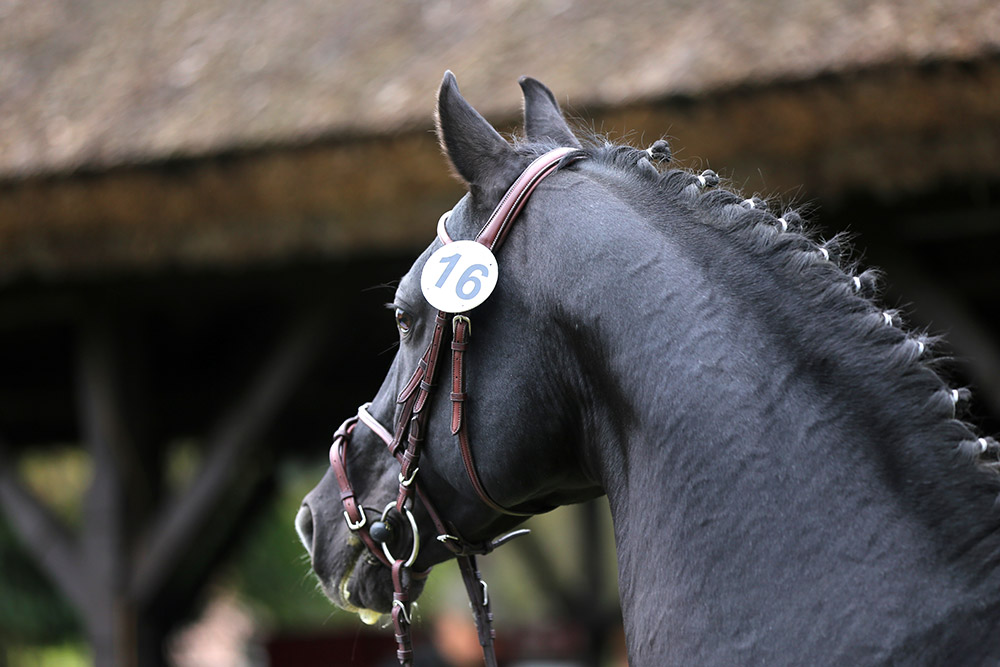
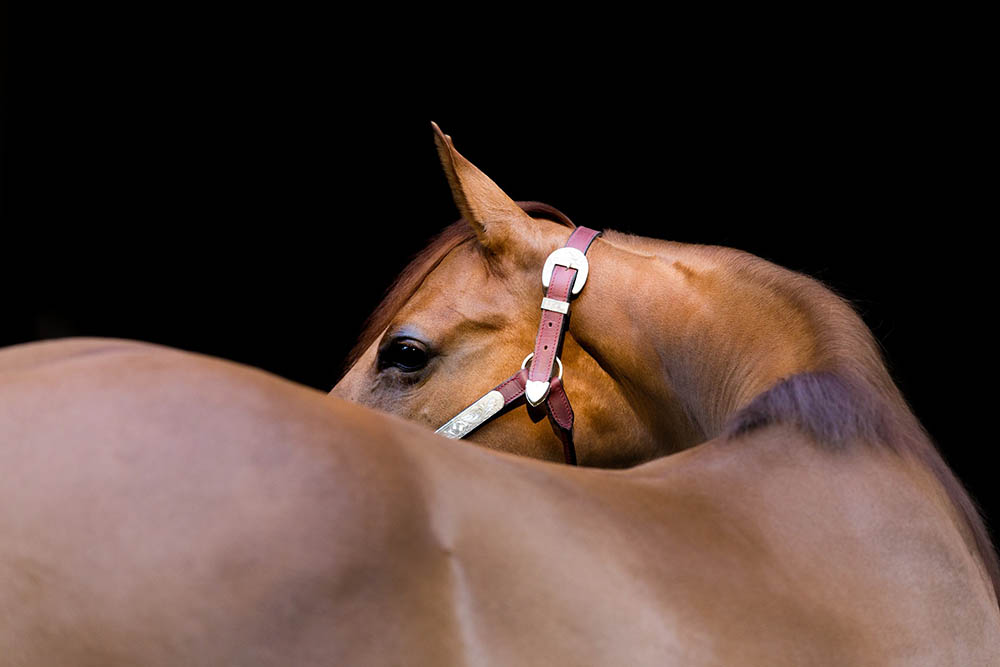
“By identifying these
individuals (carriers), matings
between two carriers can be avoided.”
IDENTIFYING CARRIERS
There are several genetic tests available in Australia that identify carriers of mutated genes that cause disease.
QUARTER HORSES & RELATED BREEDS
HYPP — Hyperkalemic periodic paralysis: This is an inherited disorder that is an autosomal semi-dominant trait. It affects a certain type of sodium pump in muscle cells stopping it from turning off when the levels of potassium in the tissues are high, allowing muscles to continually fire until they become weak and exhausted. This is seen clinically as muscle fasciculations (trembling and shaking), progressing to weakness where the horse may dog-sit or lie down. Sometimes the respiratory muscles are affected, causing difficulties with breathing, respiratory distress and on rare occasions, death. It is seen in Quarter Horses and associated breeds, with horses appearing to be normal between episodes. The disease can be managed by reducing stressful events, dietary changes, and regular exercise. By identifying individuals with this condition, not only can potentially dangerous matings be avoided but owners can be made aware of the status of their horse and so have in place protocols to manage those horses identified as HYPP horses.
HERDA — Hereditary Equine Regional Dermal Asthenia: This is an autosomal recessive trait that affects the skin of horses, predominantly American Quarter Horses and their related breeds, and is thought to be due to a defect with collagen fibres. Clinically the skin becomes hyperextensible, meaning it can be pulled right up away from the body as the skin is not connected properly to the underlying tissues. Horses with this condition become prone to tearing and ulceration of the skin and develop lesions that do not heal well and easily scar. The defect is associated with the structure of collagen fibres and their ability to heal if damaged. It is not usually seen clinically until the horse is around 2 years of age and can correspond in time to when the horse is being broken in and saddled for the first time, as the pressure of the tack on the skin causes large areas of damage. There is no cure, and many horses are euthanised.
MH — Malignant Hyperthermia: This is an autosomal dominant trait that can cause the body to overheat when certain triggers are activated. The common one that is seen with MH-affected horses (and other MH-affected species) is exposure to certain anaesthetics, predominantly some gaseous anaesthetic agents used for horses. The mutated gene enables large amounts of calcium that are stored with the muscle cells to be released into the plasma of the cell, causing muscle fibre contraction. This excessive muscle contraction quickly depletes the cells of energy and generates high amounts of heat, resulting in high body temperatures, lactic acidosis and muscle damage. Clinically, this looks like a horse with a severe episode of exertional rhabdomyolysis (“Tying Up”). It can also be triggered by intense exercise or stress. If an individual is recognised as having this gene, there are precautionary treatments (dantrium) that can be given prior to the horse having to undergo anaesthesia, to reduce the risk of an episode. If the horse does become hyperthermic either due to anaesthesia or intense exercise, it is important to cool them and have the vet treat the horse ASAP.
GBED — Glycogen Branching Enzyme Deficiency: This is an autosomal recessive genetic disease that affects the foal’s ability to store and utilise glycogen in the body and therefore prevents the body maintaining the necessary glucoses levels required in the blood. The body relies on stored glycogen to be converted to glucose so a relatively constant level of glucose can be maintained; without glucose being available to the cells, the body cannot function, and death occurs.
PSSM1 — Type 1 Polysaccharide Storage Myopathy: This is a glycogen storage disease that results in abnormally large amounts of glycogen being stored in the muscle cells. These stores cannot readily be broken down into sugars, which are needed as energy for muscles to function properly. This is seen clinically as a horse that has “tied up” with muscle stiffness, sweating and a reluctance to walk. It is inherited as an autosomal dominant trait, but not all horses will show the full clinical signs, and factors such as diet, exercise and management can decrease the severity of episodes.
LWS — Lethal White Syndrome: This is more common in the paint horse population and is an autosomal recessive condition associated with a lack of neurological development of the intestines. Foals are born as healthy individuals but quickly deteriorate when they begin to suckle. Muscular movements to enable food to pass along through the gut and allow gas and other non-absorbed or undigested material to be passed out of the body do not occur. Foals quickly become bloated and colicky and prognosis for survival is hopeless. As they become so painful quite quickly, foals are usually euthanised within 12 hours of birth. The genetic defect also causes a complete lack of melanocytes in the body, so these foals are born without colour (white) and have blue eyes. Deafness is thought to be associated with this condition; however, this is probably of minor significance, as these foals do not live long enough to make this a clinical issue.
IMM — Immune-Mediated Myositis: This condition differs slightly to many of the other conditions mentioned as it is associated with the presence of a gene but does not follow a recessive/dominant pattern. The horses affected are Quarter Horses and their related breeds and it causes those horses affected to rapidly lose muscle mass (atrophy) symmetrically along their topline and hind-limb muscles after a trigger event such as vaccination for, or infection with Strangles (Streptococcus equi). The muscle atrophy is treatable, although it may take months for the muscle to return to normal and can recur. Some horses may require euthanasia due to the severity of the muscle loss or the prolonged duration of the wastage, causing a poor quality of life. The gene is also seen in Quarter Horses that tend to “tie up” without being exercised (non-exertional rhabdomyolysis).

“If a SCID foal catches a
simple cold virus, they
cannot make antibodies.”
ARABIANS & ARABIAN-RELATED BREEDS
CA — Cerebellar Abiotrophy: An autosomal recessive trait that affects the cerebellum, a large part of the brain that plays an important role in fine motor control. The disease causes a premature degeneration of the “Purkinje neurons”. These foals typically are ataxic and show a head tremor, often called an intention tremor, without signs of any weakness. They often stand with their legs wide apart and can appear to goosestep when they walk. Usually, the symptoms are seen by the time a foal is 6 months of age. There is no cure for this disease, however some horses will stabilise or even show mild improvement when they reach maturity.
OAAM — Occipitoatlantoaxial Malformation: The first two cervical (neck) vertebrae and the base of the skull do not develop properly resulting in severe neurological signs that are due to compressive damage to the spinal cord. Some foals are born dead or paralysed whilst others can stand but show signs of neurological abnormalities. Affected foals are usually euthanised if they survive to diagnosis. OAAM is an autosomal recessive characteristic that is found predominantly in Arabs, however, there appears to be a couple of variants in the genes that can cause OAAM (one is associated with cardiac deformities). The current genetic test available for the mutated gene that causes OAAM is only available for one variant of the disease and so it is possible that a mare that has been tested negative can have an affected foal — if this occurs, the mare should be treated as a carrier regardless of the test result.
SCID — Severe Combined Immunodeficiency: This is a genetic condition that results in the lack of B- and T-lymphocytes in foals. Both these types of lymphocytes are involved in preventing disease by mounting an immunological defence to any bacteria, virus, or foreign agent that the body encounters. Without these lymphocytes, every bacteria or virus can infect the foal and may be fatal. If we catch the human cold, our immune system kicks in; we produce antibodies, fight off the virus and recover within days. If a SCID foal catches a simple cold virus, they cannot make antibodies or fight the disease and become extremely sick, weak, and susceptible to secondary infections. In the initial few months of life, these foals appear to be normal as they are protected by the mare’s colostrum (antibodies absorbed from it). By 2-3 months of age, the antibodies the foal derived from the colostrum have declined and clinical evidence of infections appear, with most foals dying before they are 6 months old.
LFS — Lavender Foal Syndrome: Also an autosomal recessive genetic trait, these foals when born are unable to stand and exhibit signs of a severe neurological defects including rigidity of the limbs, back and neck, paddling and seizures. Referred to as “Lavender Foals” or “Coat Colour Dilution Lethal” foals, this condition is linked to the dilution of colour in their coats (they can have a silver, pewter or pale chestnut (pinkish) hair coat as well as lavender). Regardless of any supportive treatment, this condition is inevitably fatal.
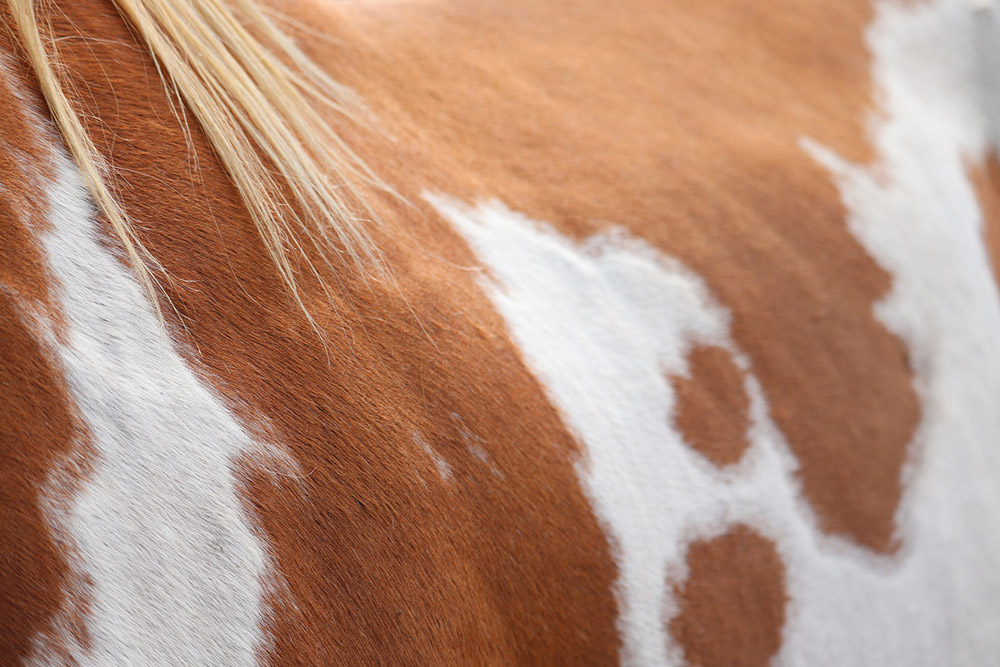
“Hair is also being used to
assess the genes that affect colour.”
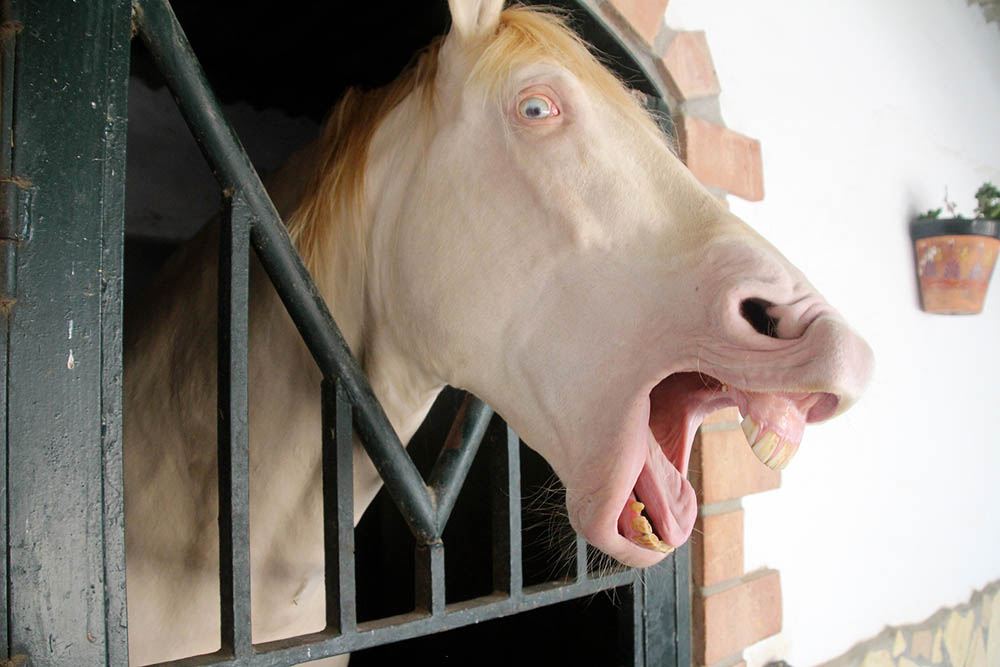
“The desire to strengthen a
good genetic quality outweighs
the risk of getting a bad one.”
OTHER
WFFS — Warmblood Fragile Foal Syndrome (Type 1): Foals that inherit the mutated gene for WFFS from both parents are born with abnormal collagen fibres that do not have the ability to provide any tensile strength in the connective tissues (CT) around the body. The lack of normal CT means there is no strength in the skin, which becomes very fragile and readily damaged. Simple prolonged contact such as lying on the ground can cause damage to the skin resulting in large areas of skin sloughing. These foals cannot usually stand as there is little strength in their tendons and their joints leading to excessive bending (hyperextension) of the limbs and euthanasia is the only viable option.
JEB — Junctional Epidermolysis Bullosa: This disease is characterised by blister formation in the skin and mucous membranes resulting in large areas of skin, and in some cases the hooves, sloughing off. Due to the poor prognosis, most foals are euthanised; those that are not usually die within a couple of weeks of life due to the overwhelming infections that result from large areas of skin loss. It is an autosomal recessive trait that has been recognised in Belgian horses and related breeds as well as in American Saddlebreds. Interestingly, the gene that produces JEB is different in these two different breeds of horses, requiring two different genetic tests (JEB1 and JEB2).
HWSD — Hoof Wall Separation Disease of Connemara Ponies: The hoof wall cracks and separates from the sole in all four feet. It usually manifests itself within the first 6 months of age and causes chronic lameness. It is an autosomal recessive trait.
Hydrocephalus: This is an enlargement of the brain caused by an increase in cerebral spinal fluid (CSF) that usually causes a massive dome-shaped swelling on the forehead. Foals can be born dead or die during birth due to a dystocia (difficult birth) caused by the large, deformed head. Foals born alive usually have severe neurological defects and require euthanasia. The condition is an autosomal recessive trait associated with Friesian horses. I have encountered two hydrocephalic foals in my life, one a standardbred and one a Stockhorse and both presented for dystocia. Neither of these are currently recognised as breeds with inherited hydrocephalus.
Dwarfism: Seen in Friesians as an autosomal-recessive genetic disorder, the mutation produces foals with short legs and a disproportionately large body.
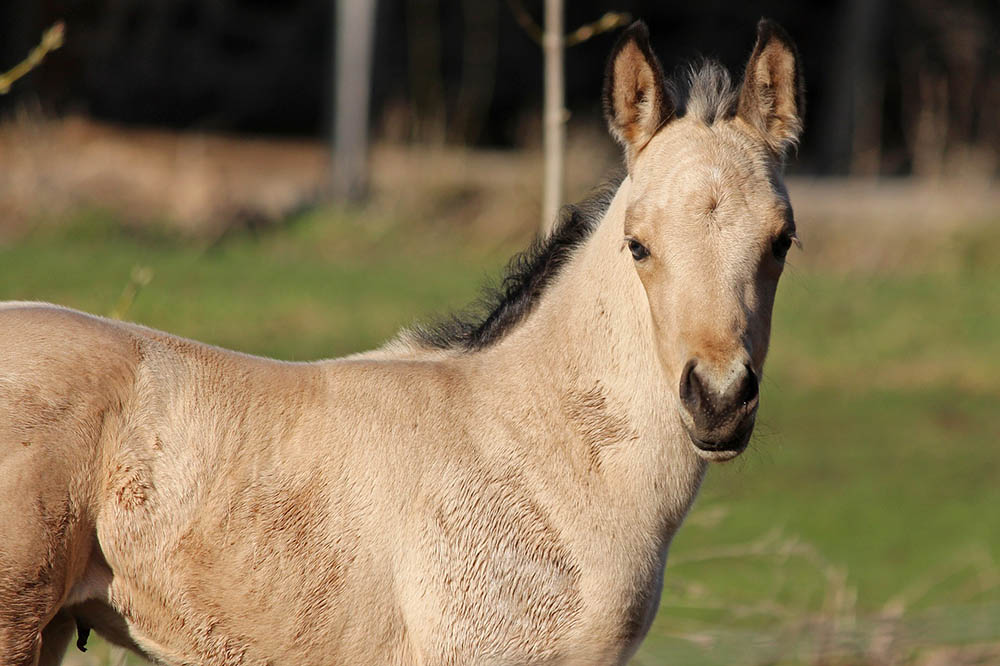
“We can all make a conscientious decision to improve the quality of our horses…”
GENES & COLOUR
Aside from identification/parent verification and assessment of genotypes for certain disease traits, hair is also being used to assess the genes that affect colour. A full in-depth article just on coat colour would be required to explain the genetics involved as it is more complicated than the simple dominant/recessive disease traits listed above, but I shall mention a few salient points. Colour is under the influence of several genes. Apart from just determining the colour, these genes can alter the pattern and the amount of pigment (dilution of colour).
Melanin is the pigment responsible for colour in the horse; however, it is the presence of other genes that cause variations in the production of melanin and results in horses having one of three basic coat colours (bay, black or chestnut). Grey is not a basic coat colour but a is a result of a dominant gene that causes depigmentation of the coat colour. Thus, grey horses are born a certain coat colour but progressively go grey as they age. All horses that are grey must have at least one parent that is a grey.
Dilution genes, so called because they reduce the intensity of pigment, will also influence the coat colour that results from a mating. These are known more commonly as the Dun, the Cream, and the Champagne gene and each of these can also differ in what parts of the body they affect. For instance, the Dun gene will not dilute the mane, tail head or legs, whereas the champagne gene affects the coat colour, as well as the colour of the eyes and the skin.
Hair genetic testing can be used by breed associations to determine which genes are carried by individuals so they can classify whether a horse in homozygous (meaning 2 of the same gene), or heterozygous (2 different genes) for a colour or pattern. This is the case with Tobiano, a dominant gene that gives the white spotting pattern to paints and pintos. A Tobiano foal must have at least one parent that is a Tobiano. Owners can use genetic testing of colour to try and predict the colour of the offspring from a planned mating.
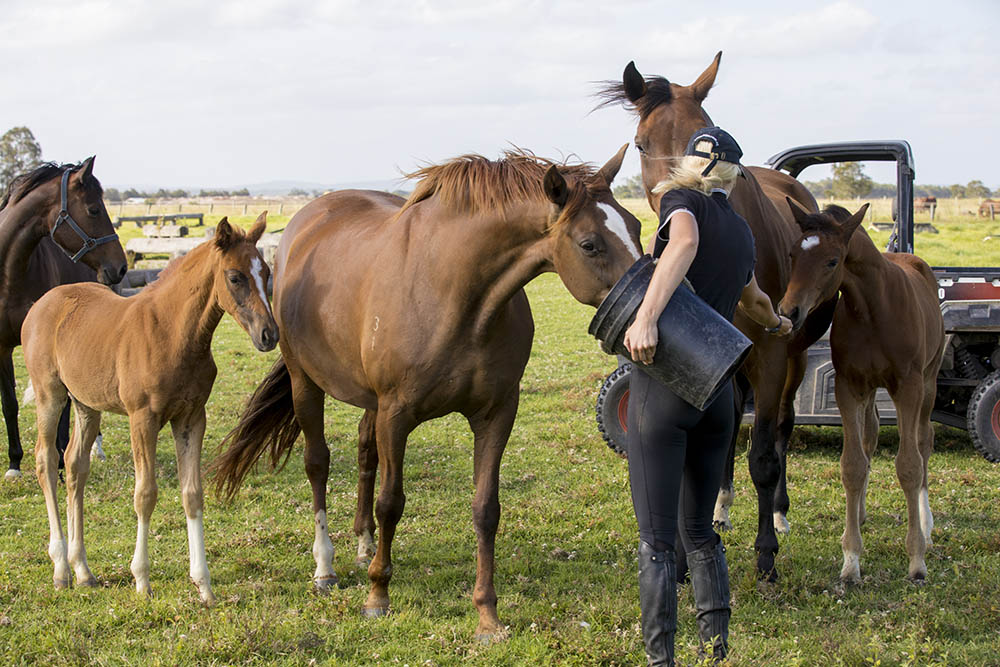
You might also like to read the following veterinary articles by Dr Maxine Brain:
Heavy Metal Toxicities – Equestrian Life, February 2021
How to Beat Heat Stress – Equestrian Life, January 2021
Medicinal Cannabis for Horses – Equestrian Life, December 2020
Foal Diarrhoea Part 2: Infectious Diarrhoea – Equestrian Life, November 2020
Foal Diarrhoea (Don’t Panic!) – Equestrian Life, October 2020
Urticaria Calls For Detective Work – Equestrian Life, September 2020
Winter’s Scourge, The Foot Abscess – Equestrian Life, August 2020
Core Strengthening & Balance Exercises – Equestrian Life, July 2020
The Principles of Rehabilitation – Equestrian Life, June 2020
When is Old, Too Old? – Equestrian Life, May 2020
MUSCLE GROWTH
Genetic testing has also been used to predict muscle growth in some breeds and this has been extrapolated to predict the future performance of the horse. Used predominantly for Thoroughbred racehorses, the test predicts what the best distance the horse should perform over and whether they are better suited to an early racing career or a late start. The gene tested is one that governs muscle development and the type of muscle fibres within the muscle. It divides horses into three groups, either a C:C, a C:T or a T:T.
- C:C have more fast twitch fibres and tend to develop earlier, so are said to perform best as sprinters.
- T:T have more slow twitch fibres, are slower to develop and are said to perform better over middle to longer distances.
- C:T are in between, they have a more even distribution of fast and slow twitch fibres and should optimally perform over middle distances.
As the number of traits and abnormalities able to be genetically mapped increases, the use of genetic testing within breeds to identify good and bad genotypes will follow. Responsible breeding to reduce and ideally eliminate lethal genes is something we should aim for; however, it is not always as simple as I have presented in this article. Some of the genetic traits that have been identified as causing health issues in the horse are associated, or linked to genes that produce desirable characteristics that breeders strive to produce. When tracked back, some of these diseases originate from one stallion that carried a single mutation, and because of his superior genetic traits in other areas, people have continued to breed back to his lines as the desire to strengthen a good genetic quality outweighs the risk of getting a bad one. By understanding how genes work to produce a trait and be able to detect what genes a horse carries, we can all make a conscientious decision to improve the quality of our horses whilst putting the welfare of future generations first. EQ

